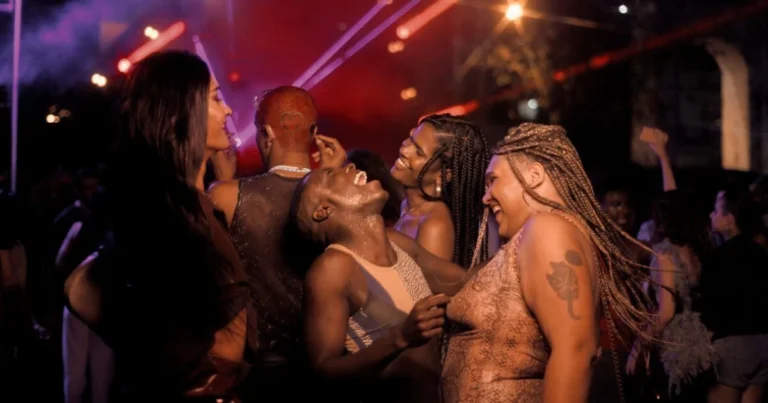Creating inclusive kink events is about more than just opening the doors to everyone; it’s about ensuring that all attendees, particularly those from marginalized backgrounds, feel genuinely welcomed, respected, and safe. Inclusivity requires intentionality and effort, but the rewards are a stronger, more connected community where diversity is celebrated.
Why Inclusivity Matters in Kink Events
Inclusivity isn’t just a buzzword; it’s a vital aspect of creating a space where everyone can express themselves freely and authentically. For many marginalized groups, including BIPOC, LGBTQIA+ individuals, and those with disabilities, kink spaces can either be places of liberation or exclusion. Prioritizing creating inclusive kink events in your planning ensures that these spaces are welcoming and affirming.
Breaking Down Barriers
Marginalized groups often face systemic challenges that can make accessing kink spaces difficult. By creating inclusive events, you’re actively working to dismantle these barriers.
Building Trust
Inclusivity fosters trust and safety, allowing more people to participate and engage fully without fear of discrimination or exclusion.
Steps for Creating Inclusive Kink Events
Creating truly inclusive kink events requires a thoughtful approach and concrete actions. Here’s how you can start:
Design Your Event with Inclusivity in Mind
The first step to creating inclusive kink events is to intentionally design it with diversity and inclusion at the forefront.
Representation Matters
Ensure that when you’re creating inclusive kink events you include diverse voices from speakers and facilitators to performers and volunteers. Representation isn’t just about visibility; it’s about making sure a range of perspectives and experiences are included.
Diverse Programming
Offer a variety of workshops and sessions that cater to different communities and kink interests. By acknowledging that there isn’t a one-size-fits-all approach to kink, you create space for everyone to engage in ways that resonate with them.
Set Clear Inclusivity Policies
Inclusivity begins with clear and enforceable policies that set the tone for your event.
Develop a Code of Conduct
Create and enforce a code of conduct when you’re creating inclusive kink events that explicitly addresses discrimination, harassment, and microaggressions. Make it clear that your event is a safe space for everyone, and outline the consequences of violating these policies.
Communicate Expectations
Clearly communicate your inclusivity policies before and during the process of creating inclusive kink events. This ensures that all participants understand what is expected of them and the standards of behavior that will be upheld.
Make Your Event Accessible
Accessibility is a critical component of inclusivity. Consider both physical and economic accessibility to ensure that your event is welcoming to all.
Consider Physical Accessibility
Choose venues that are wheelchair accessible and provide options for those with mobility needs. Additionally, consider offering ASL interpreters or other accommodations for attendees who may require them.
Economic Accessibility
Offer sliding scale fees, scholarships, or volunteer opportunities to make the event financially accessible to a wider audience. This ensures that economic barriers don’t prevent someone from participating.
Foster a Welcoming Environment
Creating a welcoming environment goes beyond logistics; it’s about the atmosphere and culture of the event.
Inclusive Language
Use language in your marketing materials, event signage, and programming that is inclusive and respectful of all identities. This includes being mindful of pronouns, avoiding assumptions about participants’ experiences, and using language that reflects a broad range of identities and experiences.
Cultural Sensitivity
Be aware of cultural nuances and sensitivities, particularly when planning activities that involve touch, intimacy, or power dynamics. Ensure that the event content respects and acknowledges the diverse cultural backgrounds of participants.
Engage with the Community
Engaging with the community is key to understanding and meeting the needs of all participants.
Feedback and Reflection
After the event, seek feedback from attendees on how inclusive they felt the event was and where improvements could be made. This could be through surveys, focus groups, or one-on-one conversations.
Continuous Learning
Stay engaged with the community and keep learning about how to improve inclusivity at your events. Inclusivity is an ongoing process that requires commitment and adaptation, so be open to evolving based on the feedback and experiences shared by your community.
Sustaining Inclusivity in Your Events
Inclusivity is not a one-time initiative but a continuous effort. To sustain inclusivity in your events, consider the following:
Regularly Reassess
Continuously assess the inclusivity of your events when you’re creating inclusive kink events, and be open to making changes based on feedback and new understandings. Inclusivity isn’t static; it evolves as the community grows and changes.
Empower Marginalized Voices
Create spaces where marginalized voices are not only heard but valued and centered in decision-making processes. This might involve inviting BIPOC, LGBTQIA+, and other underrepresented groups to be part of the planning and leadership teams for your events.
Conclusion
Creating inclusive kink events is about more than just inviting diversity; it’s about ensuring that every participant feels respected and valued. By taking intentional steps to foster inclusivity, you can help build a community that is not only diverse but also deeply connected and supportive. The work of inclusivity is ongoing, but with commitment and care, it can lead to richer, more vibrant kink communities where everyone can thrive.
Check out my class, Creating BIPOC Inclusive Kink Spaces!

